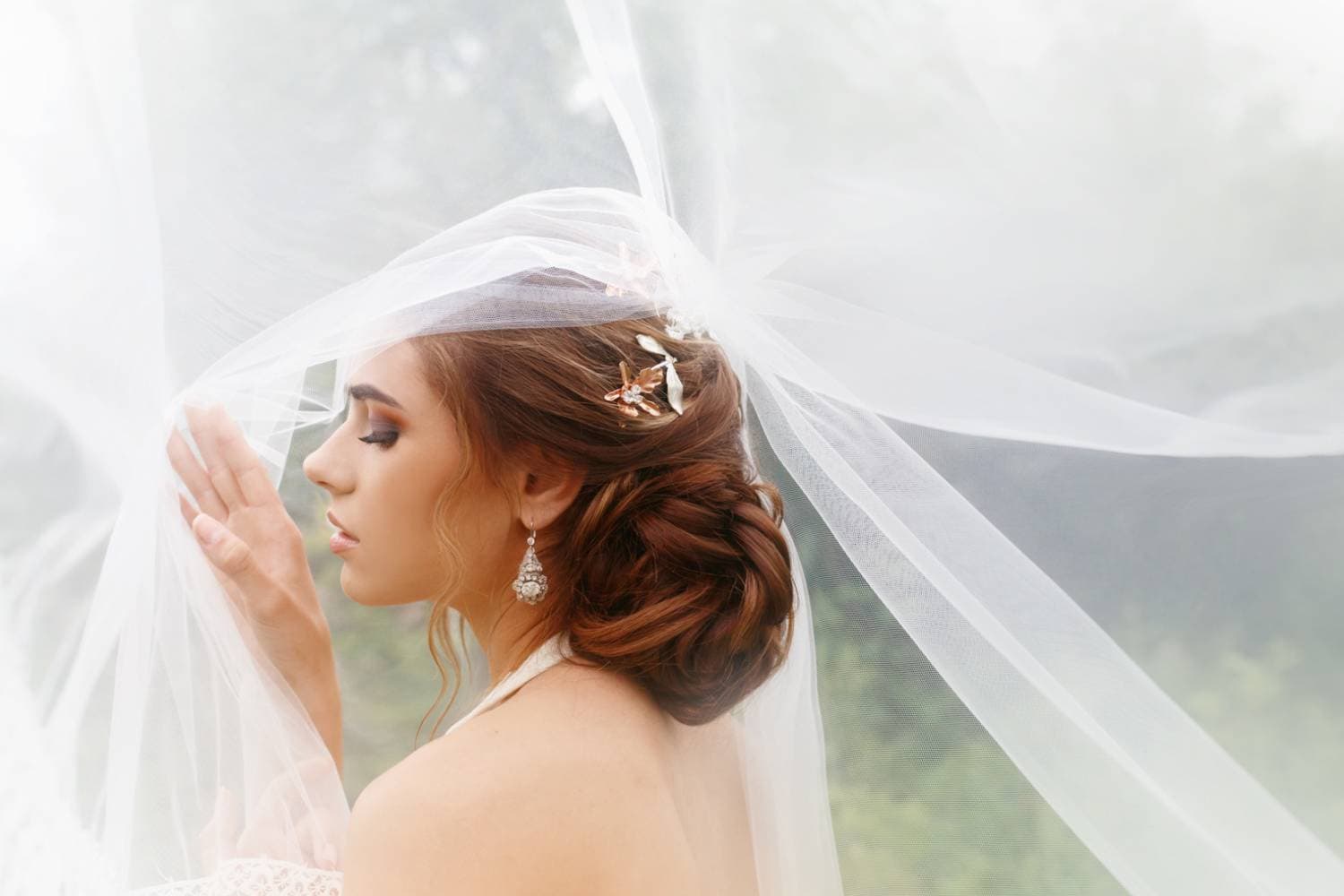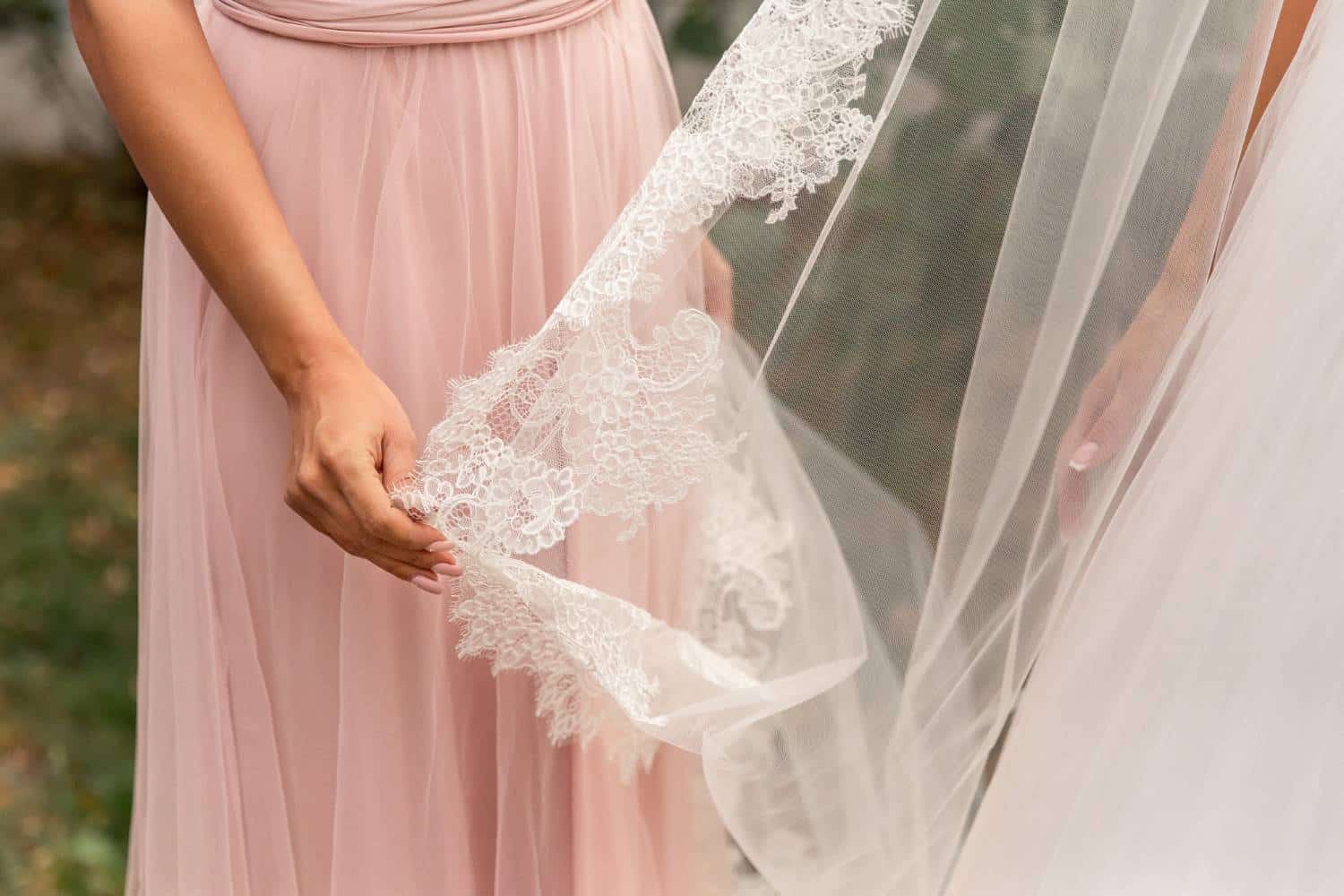Bridal veils hold immense sentimental value, often passed down through generations as precious heirlooms.
However, over time, these delicate fabrics can become yellowed, stained, or dusty, diminishing their former glory. If you’re wondering how to whiten an old bridal veil, don’t worry!
With a bit of care and expertise, your veil can be restored to its original beauty, allowing you to incorporate this beautiful piece of history into your special day.
In this guide, we will take you through gentle, fuss-free hand-washing techniques and other methods to breathe new life into an old bridal veil.
Let’s get straight to the point
To whiten an old bridal veil, which often yellows due to fabric aging, you can use gentle home methods. Begin by inspecting the veil for damage, then soak it in a safe bleach solution or use alternatives like lemon juice.
Avoid harsh detergents and machine washing. Air-dry the veil carefully after rinsing. For veils with intricate detailing or made from silk, professional cleaning may be necessary.
Proper storage, such as using a breathable garment bag, will help preserve the veil’s condition. With the right care, your veil can be beautifully restored for future use.
Why Do Old Bridal Veils Turn Yellow?
Fabrics like tulle, lace, and illusion netting tend to age over time, especially when stored improperly.
Exposure to moisture, heat, and even air can cause these fabrics to oxidise, leading to a yellowing effect. This is particularly common with bridal veils that have been tucked away in attics or storage boxes for years.
Sentimental Value of Heirloom Veils
Many brides hold onto their wedding gowns and veils, hoping to pass them down to their daughters.
While this is a beautiful tradition, it’s common for these pieces to require some rejuvenation before they’re ready to be worn again.
Can You Whiten an Old Bridal Veil at Home?
Yes! In many cases, you can whiten an old bridal veil at home using gentle methods.
While some veils, especially those made from delicate fabrics like silk or featuring intricate detailing, may need professional attention, most tulle or lace veils can be treated with home remedies.
Let’s explore the steps you can take to clean and whiten your veil.
Step-by-Step Guide to Whitening an Old Bridal Veil
Step 1: Inspect the Veil for Damage
Before you begin any cleaning process, it’s crucial to inspect the veil closely. Look for signs of brittleness, fraying, or dry areas. If you notice severe damage, it may be best to take the veil to a professional dry cleaner who specialises in antique fabrics.
Step 2: Prepare a Gentle Bleach Solution
For a safe cleaning process, use oxygen-based bleach, which is gentle on delicate fabrics. Products like Clorox 2 are ideal because they won’t damage coloured fabrics or embellishments. Here’s how to make the solution:
- Dissolve a small amount of oxygen-based bleach in hot water.
- Mix it thoroughly to ensure it’s well-dissolved before adding to the tub of warm water.
This solution will help brighten your veil without causing damage to fragile fabrics.
Step 3: Soak the Veil
Fill a tub with lukewarm water (about 10 inches deep) and add the bleach solution. Carefully submerge the veil in the water.
Use two towels, one on top of the other, to hold the veil in place (this is often referred to as the “towel sandwich” method). Let it soak for 20 minutes to 2 hours, checking every 20 to 30 minutes to see if the veil has whitened to your liking.
Step 4: Rinse the Veil
After the soak, empty the tub and refill it with cold water. Place the veil between two towels again and rinse thoroughly.
Be sure to avoid wringing or twisting the fabric, as this can damage delicate materials like tulle or illusion netting.
Step 5: Dry the Veil Properly
Once rinsed, place the veil on a clean, dry towel and use another towel to gently blot away any excess water.
Allow the veil to air dry completely. Veils made of tulle or lace can be hung on a plastic hanger, ensuring they’re in a well-ventilated space to avoid mildew.
Alternative Methods to Whiten a Bridal Veil
Using Lemon Juice
Another effective method to whiten a bridal veil is by using lemon juice, which acts as a natural bleaching agent. Simply mix one tablespoon of lemon juice with a cup of water.
Soak the veil in this solution for about an hour before rinsing and drying as mentioned above. The acidity of the lemon juice will help to lift yellow stains while being gentle on fabrics.
Starch and Hot Water Method
Veils that need extra care should be soaked in a mixture of starch and hot water. Add a teaspoon of starch to a pot of boiling water, then immerse the veil. This method can help restore the veil’s structure and appearance, giving it a fresher, more pristine look.
What to Avoid When Whitening a Bridal Veil
Avoid Harsh Detergents
When cleaning an old bridal veil, avoid using harsh detergents or enzymatic cleaners, which can damage delicate fabrics like lace.
Instead, opt for enzyme-free, hypoallergenic laundry detergents, such as ECOS Hypoallergenic Laundry Detergent, to ensure your veil stays intact and beautiful.
Skip the Washing Machine
While it may be tempting to toss the veil into the washing machine, resist the urge! Even the most delicate cycle can cause tearing, stretching, or tangling of fragile materials. Hand washing is always the best option for bridal veils.
When to Seek Professional Help
Silk Veils and Complex Details
If your veil is made from silk, has satin trim, or features elaborate embellishments like beadwork or embroidery, it’s best to take it to a professional cleaner. They have the specialised equipment and expertise to safely clean and restore delicate fabrics without causing damage.
Professional Dry Cleaning
For heavily stained or extremely fragile veils, professional dry cleaning is often the safest route. Many dry cleaners can assess whether the veil can handle certain cleaning techniques. It’s crucial to choose a reputable cleaner, especially when dealing with valuable heirlooms.
Conclusion
A bridal veil is a timeless accessory, often holding both sentimental and aesthetic value. While yellowing and stains are common issues for vintage veils, you can easily restore your veil to its former glory with the right methods.
Whether you choose to whiten your veil at home using gentle bleach, lemon juice, or professional cleaning services, your veil can become a beautiful piece of your wedding day ensemble.
For Australian brides looking for wedding reception venues or bridal gown shops in Melbourne, take time to explore local listings.
Whether you’re planning to use a cherished family heirloom or choosing something new, your wedding veil can add a touch of elegance and tradition to your special day.
By taking the proper steps, your old bridal veil will be as stunning as the day it was first worn.
Frequently Asked Questions
What does the cord symbolize in a wedding?
This cord symbolizes lifetime unity or the everlasting union of the bride and groom when they officially become husband and wife, as well as a symbol of marital protection; while the loops formed signifies their love for one another.
What is veil in wedding?
A veil is a romantic addition to any wedding dress. It’s usually a piece of tulle fabric that complements the dress, but it does not have to be. Whether your style skews ball gown or tea-length, it adds the perfect finishing touch.
Who takes of the bride veil?
The most common method is for the father to raise the blusher of his daughter’s veil when they reach the altar, and then hand her off to the groom.
The second option is to leave the veil down during the entire ceremony until the pronouncement of husband and wife. The groom then lifts the veil and kisses his bride.
Who puts the veil and cord?
Godparents drape a ceremonial lace veil over the bride’s head and the groom’s shoulder to symbolize being clothed as one. A ceremonial cord called a yugal is wrapped around the couple in figure eight. This symbolizes an eternal bond of fidelity.
Are wedding veils out of style?
Nowadays, depending on the culture, veils have lost most of that symbolism. And, in modern American society, they’re not even an essential or required part of the ceremony or wedding day. Many brides choose to forgo wearing a veil altogether.



